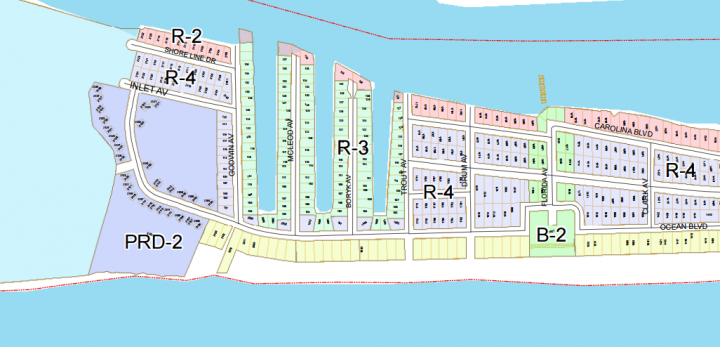TOPSAIL BEACH – The latest ruling in a lawsuit against Topsail Beach punts the fight over the revocation of the town’s dune protection ordinance back to the town.

The North Carolina Court of Appeals has upheld a superior court judge’s decision last year to dismiss the lawsuit filed by several Topsail Beach property owners after the town board repealed its longstanding dune protection ordinance.
Supporter Spotlight
The court agreed with Pender County Superior Court Judge R. Kent Harrell’s April 13, 2017, ruling to dismiss the case on the grounds of “lack of subject matter jurisdiction.”
“I think it is a good way of saying that it was premature,” Steve Coggins, Topsail Beach’s attorney, said. “Here we don’t even have a formal building permit being issued and so you have a hypothetical situation.”
Judgments in the case essentially mean that property owners who sued the town must wait for the town to receive a building permit application for any of nearly 30 undeveloped oceanfront lots stretching between the Sea Vista Motel and Serenity Point at the southern end of town.
Once a building permit is granted, property owners can appeal to the town’s board of adjustment in what would be a quasi-judicial hearing.
Grier Fleischhauer, the man who spearheaded the lawsuit against the town, said there are two elements to the court of appeals’ March 6 ruling, the opinion of which was published March 14.
Supporter Spotlight
“One is that they agreed with the lower court that a lawsuit was not ripe because they felt like that the town should go through it’s process and go through the building permitting process with an individual and then go through the board of adjustment,” he said.
“Here we don’t even have a formal building permit being issued and so you have a hypothetical situation.”
Steve Coggins, town attorney
The second part, Fleischhauer said, is that appellate court did not decide on whether the property owners have “standing.” Standing is the determination of, in this case, the property owners being imminently affected or harmed in the court does not address the problem.
The lower court ruled the more than 40 plaintiffs representing more than 20 properties did not have standing.
“I think anybody can see that we do have standing,” Fleischhauer said. “At least that was set aside. That gives us an avenue once we go through the process to the board of adjustment that we can still take it to court. We’re not capitulating. At the moment, we’re going to see what happens.”
“We’re not capitulating. At the moment, we’re going to see what happens.”
Grier Fleischhauer, a plaintiff in case against the town
Building permits for two of the oceanfront lots have been rejected by the town after officials deemed the applications incomplete, according to the town’s clerk Christina Burke.
Town officials determined that the applications needed to include engineering analysis showing that building on the property would not increase the threat of flooding to properties behind the dune. The permit applications contained letters from engineers stating there would not be an increased flood threat.
Burke said the building contractor is waiting for the results of the engineering analysis and plans to resubmit applications to the town.
Several property owners whose land and homes are directly behind the 28 oceanfront lots on the south end have steadfastly argued that building on the lots will weaken the dunes, therefore increasing the threat of flooding to their properties.

For years, the oceanfront lots were unbuildable because the dune system along that stretch of beach had been flattened by storms.
The town and private property owners spent years restoring the dunes through beach re-nourishment, planting sea oats and installing fencing to trap sand.
Their efforts eventually created lots that now have enough sand on them to meet the state Coastal Area Management Act’s setback requirements from the frontal dune. Frontal dunes are immediately seaward of the beach.
Several CAMA permits have been issued to owners of the oceanfront properties, 22 of which are privately owned. The town owns the other six lots.
After one of the properties along that stretch of oceanfront was developed in 2015, the town that following year re-examined its more than 20-year-old dune protection ordinance.
The town board amended the ordinance, making changes that owners of the oceanfront properties said rendered their lots unbuildable.
Several owners of property on the sound side of the island, though, urged commissioners to maintain the ordinance, arguing that developing the oceanfront lots would increase flood damage and potentially jeopardize the town’s National Flood Insurance Program rating.
Commissioners in December 2016 repealed the ordinance.
Five days later, Fleischhauer, joined by other soundside property owners, sued.
Fleischhauer lives in a home on the banks of one of three man-made canals that flow into New Topsail Inlet. The canals are directly behind the undeveloped lots.
Not just any property owner in town may appeal to the board of adjustment regarding development of the lots, Burke said.
Property owners, like Fleischhauer, who live immediately adjacent to the lots can challenge building permits pertaining to the oceanfront lots.







